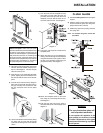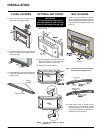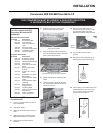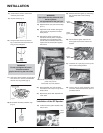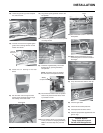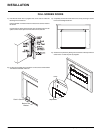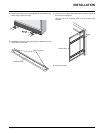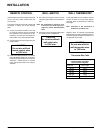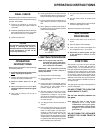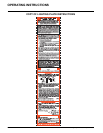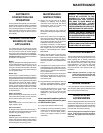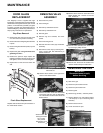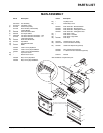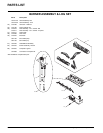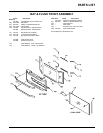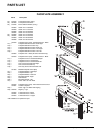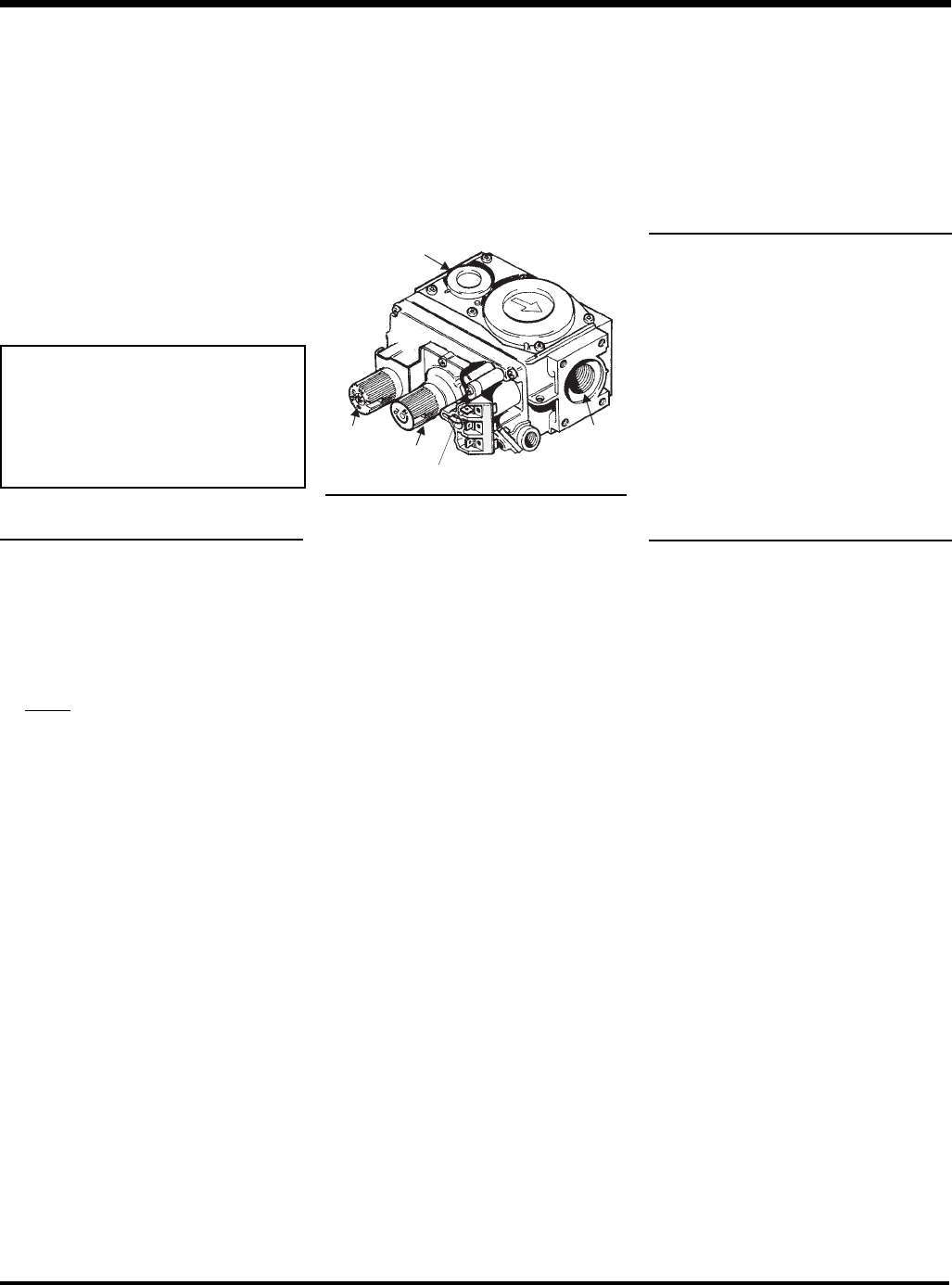
23Regency
®
E21-2 Gas Fireplace Insert
FINAL CHECK
Before leaving this unit with the customer, the
installer must ensure that the appliance is fi ring
correctly. This includes:
1) Clocking the appliance to ensure the
correct fi ring rate (rate noted on label) at
15 minutes.
2) If required, adjusting the primary air to ensure
that the fl ame does not carbon. First allow
the unit to burn for 15 min. to stabilize.
3) Check for proper draft.
7) Turn gas control knob counter clockwise to
"ON".
8) Use the rocker switch to operate main
burner.
9) Rotate the variable fl ame control to adjust
the fl ame height higher or lower.
10) Close the bottom louver assembly.
SHUTDOWN
PROCEDURE
1) Use the rocker switch to turn off the main
burner.
2) Open the bottom louver assembly.
3) Push in the gas control knob slightly and
turn clockwise to "OFF". Do not force.
4) Disconnect all electric power and gas
to the appliance if service is to be
performed.
FIRST FIRE
The fi rst fi re in your stove is part of the paint
curing process. To ensure that the paint is
properly cured, it is recommended that you
burn your fi replace for at least four (4) hours the
fi rst time you use it with the fan on. When fi rst
operated, the unit will release an odour caused
by the curing of the paint, the burning off of
any oils remaining from manufacturing. Smoke
detectors in the house may go off at this time.
Open a few windows to ventilate the room for
a couple of hours.
The glass panel may require cleaning after the
unit has cooled down.
DO NOT ATTEMPT TO CLEAN THE
GLASS WHILE IT IS HOT.
Do not use abrasive cleaners on
the glass.
Note: When the glass is cold and the
appliance is lit, it may cause
condensation and fog the glass.
This condensation is normal and will
disappear in a few minutes as the
glass heats up.
DO NOT BURN THE APPLIANCE
WITHOUT THE GLASS FRONT IN
PLACE.
OPERATING INSTRUCTIONS
OPERATING
INSTRUCTIONS
Before operating this appliance, proceed through
the following check list.
1) Read and understand these Instructions
before operating this appliance.
2) Check to see that all wiring is correct and
enclosed to prevent possible shock.
LIGHTING PROCEDURE
NOTE: For all propane units and units
equipped with electric spark boxes,
see "Copy of Lighting Plate Instruc-
tions" section for more details.
IMPORTANT: Gas on/off knob cannot be
turned from "PILOT" to "OFF" unless it is
partially depressed.
1) Open the bottom louver assembly
2) If the control knob is in the "OFF" position
proceed to Step 5.
3) Push in gas control knob slightly and turn
clockwise to "OFF". Knob cannot be turned
from "PILOT" to "OFF" unless knob is
pushed in slightly. Do not force.
4) Wait fi ve minutes to allow gas, that may
have accumulated in the main burner
compartment, to escape. If you do smell
gas, follow the instructions on the front of
this manual. If you don't smell gas continue
on to the next step.
5) Turn the gas control counter clockwise to
"PILOT".
6) Push in control knob all the way and hold
in. Continually push and release the black
button on spark igniter until pilot lights.
Continue to hold the control knob in for
approximately one minute, then release
the gas control knob. The pilot fl ame should
continue to burn. If the pilot does not remain
lit, repeat operation allowing a longer period
before releasing gas control knob.
6) Verify log placement. If the pilot cannot be
seen when lighting the unit - the logs or the
embers have been incorrectly positioned.
7) The unit should never be turned off and on
again without a minimum of a 60 second
wait.
8) When lighting the appliance, the inside of
the glass may fog up, this will burn off after
a few minutes of operation.
3) Check to ensure there are no gas
leaks.
4) Make sure the glass door is in place. Never
operate the appliance with the door glass
removed.
5) Verify that all venting and the cap is
unobstructed.
Gas In
Shut Off
Hi-Low
Pilot Adjust
Gas Out
TPTH TP TH
CAUTION
Any alteration to the product that causes
sooting or carboning that results in
damage to the unit is not the responsibility
of the manufacturer and will not be
covered by the warranty.



